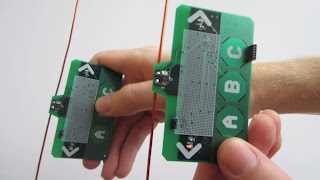We might be one step closer to an Internet-of-things reality.
University of Washington engineers have created a new wireless communication system that allows devices to interact with each other without relying on batteries or wires for power, instead harvesting energy directly from the ambient radio-frequency signals that surround us nearly everywhere.
The new communication technique, which the researchers call “ambient backscatter,” takes advantage of these TV and cellular transmissions. Two devices communicate with each other by reflecting the existing signals to exchange information. The researchers built small, battery-free devices with antennas that can detect, harness and reflect a TV signal, which then is picked up by other similar devices.
The technology could enable a network of devices and sensors to communicate with no power source or human attention needed.
“We can repurpose wireless signals that are already around us into both a source of power and a communication medium,” said lead researcher Shyam Gollakota, a UW assistant professor of computer science and engineering. “It’s hopefully going to have applications in a number of areas including wearable computing, smart homes and self-sustaining sensor networks.”
“Our devices form a network out of thin air,” said co-author Joshua Smith, a UW associate professor of computer science and engineering and of electrical engineering. “You can reflect these signals slightly to create a Morse code of communication between battery-free devices.”
 | ||
The researchers tested the ambient backscatter technique with credit card-sized prototype devices placed within several feet of each other. For each device the researchers built antennas into ordinary circuit boards that flash an LED light when receiving a communication signal from another device.
read more


No comments:
Post a Comment
Your comment will be read by a moderator first before publication.
Thank you!